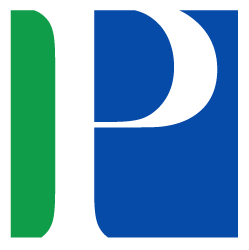College students’ perceptions of using an online automated essay scoring system
Abstract
Aim: This research aimed to examine how students felt about and responded to using the PIGAI system in their English composition courses. Students’ impressions and responses to AES initiatives were also investigated.
Method: Twenty-five undergraduates enrolled in an English Writing Course participated in this quantitative and qualitative study. This study utilized a survey created in 2016 by Professor He, Huaqing of China West Normal University for its quantitative approach. After the survey was completed, interviews with a total of 6 participants were conducted to collect data using the qualitative approach.
Findings: Positive attitudes were shown toward the PIGAI system, particularly in vocabulary and grammar, among the students. Interestingly, those students who already had a high level of English proficiency complained that the system gave them inaccurate information and lower scores than expected. They also noted the importance of the instructor’s comments to their development as writers. On the other hand, students with a lower command of English saw it as a useful tool that could help them feel more comfortable with the written word before turning in an essay.
Implications/Novel Contribution: Our data shows that instructors and academics need to design writing courses with a healthy respect for the AES system and the instructor’s comments in mind. The findings could provide useful insight into fundamental facets of integrating the AES and instructor feedback into writing lessons.
References
Bransford, J. D., Brown, A. L., & Cocking, R. R. (2000). How people learn. Washington, DC, WA: National Academy Press.
Fang, Y. (2010). Perceptions of the computer-assisted writing program among EFL college learners. Educational Technology & Society, 13(3), 246-256.
Hashim, H., Salam, S., & Mahfuzah Mohamad, S. N. (2017). Investigating learning styles for adaptive Massaive Open Online Cource (MOOC) learning. Journal of Advances in Humanities and Social Sciences, 3(5), 282-292. doi:https://doi.org/10.20474/jahss-3.5.4
He, H. (2016). A survey of EFL college learners’ perceptions of an on-line writing program. International Journal of Emerging Technologies in Learning, 11(4), 45-50.
Hilao, M. P. (2016). Creative teaching as perceived by English language teachers in private universities. Journal of Advances in Humanities and Social Sciences, 2(5), 278-286. doi:https://doi.org/10.20474/jahss-2.5.4
Sarason, Y., & Banbury, C. (2004). Active learning facilitated by using a game-show format or who doesn’t want to be a millionaire? Journal of Management Education, 28(4), 509-518.
Smart, K. L., & Cappel, J. J. (2006). Students’ perceptions of online learning: A comparative study. Journal of Information Technology Education: Research, 5(1), 201-219.
Taher, M. A., Shrestha, P. N., Rahman, M. M., & Khalid, A. K. M. I. (2016). Curriculum Linked Video (CLV) as a tool for English Language Teaching (ELT) at secondary school classrooms in Bangladesh. International Journal of Humanities, Arts and Social Sciences, 2(4), 126-132. doi:https://doi.org/10.20469/ijhss.2.20002-4
Tan, X. (2019). Research on college english writing teaching under the background of big data: Taking Leshan Normal University as an example. Theory and Practice in Language Studies, 9(1), 60-66.
Tang, J., & Wu, Y. (2011). Using automated writing evaluation in the classroom: A critical review. Journal of Foreign Language Teaching and Research, 43(2), 115 124.
Wu, Y. H. (2017). A study of effects of pigai org on college students’ english writing self-efficacy. Journal of Huzhou University, 39(12), 64-69.
Yang, X.-Q., & Dai, Y.-C. (2015). An empirical study on college english autonomous wrting teaching model. Technology Enhanced Foreign Language Education, 162(2), 17-23.
Zhang, H. (2017). Application of automated writing evaluation system in senior high school students’ English writing teaching. Foreign Language Teaching in Schools, 3(1), 50-58.

This work is licensed under a Creative Commons Attribution-NonCommercial 4.0 International License.












.png)










